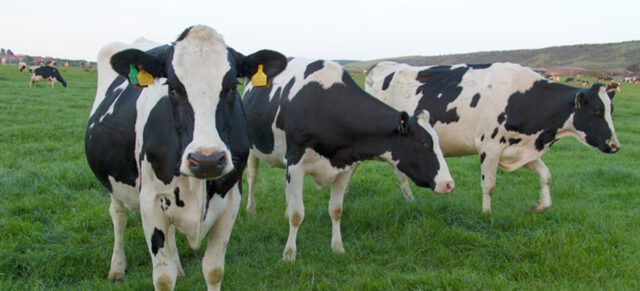
Milk production during the summer months poses several challenges for dairy farmers due to high temperatures and humidity. These environmental stressors can significantly impact milk yield, quality, and overall animal health. Here’s an in-depth look at the key challenges and potential solutions to maintain optimal milk production during the hot season.
Heat Stress: It is one of the most significant challenges, as it directly affects the cows’ physiology and behavior, leading to reduced feed intake and milk production.
Impact
- Decreased feed intake due to reduced appetite.
- Lower milk yield and altered milk composition.
- Increased respiratory rate and sweating, leading to dehydration.
- Elevated body temperature, which can impair reproductive performance.
Solutions
- Cooling Systems: Implement cooling systems such as fans, misting systems, or sprinklers in barns and milking parlors to reduce heat stress.
- Shade and Ventilation: Provide ample shade and improve ventilation in housing areas to keep cows cool.
- Water Management: Ensure constant access to clean, cool water to keep cows hydrated and help regulate their body temperature.
Nutritional Challenges: Maintaining optimal nutrition is difficult as cows eat less during hot weather, leading to a potential deficiency in essential nutrients.
Impact
- Reduced nutrient intake affecting milk yield and quality.
- Negative energy balance leading to weight loss and health issues.
Solutions
- High-Energy Diets: Formulate diets with higher energy density by including more fats and easily digestible carbohydrates.
- Feed Additives: Use feed additives like electrolytes, minerals, and vitamins to compensate for the loss due to heat stress.
- Feeding Schedule: Feed cows during cooler parts of the day, such as early morning and late evening, to encourage better intake.
Water Availability and Quality: Increased water consumption during summer can strain water resources, and maintaining water quality can be challenging.
Impact
- Insufficient water intake can exacerbate dehydration and reduce milk production.
- Poor water quality can lead to health issues and reduced feed intake.
Solutions
- Adequate Water Supply: Ensure a consistent and sufficient supply of clean water. Monitor and maintain water quality by regularly cleaning water troughs and tanks.
- Water Cooling: Provide cool water to encourage higher consumption and help regulate body temperature.
Disease and Parasite Management: Higher temperatures and humidity create favorable conditions for the proliferation of pathogens and parasites, increasing the risk of diseases.
Impact
- Increased incidence of mastitis, lameness, and other infections.
- Higher parasite load leading to stress and reduced productivity.
Solutions
- Hygiene Practices: Maintain high standards of hygiene in barns and milking parlors. Regularly clean and disinfect housing areas.
- Health Monitoring: Monitor cow health closely and implement preventive measures, including vaccinations and regular deworming.
- Fly Control: Use fly control measures to reduce the spread of diseases.
Reproductive Challenges: Heat stress adversely affects the reproductive performance of dairy cows, impacting fertility rates.
Impact
- Reduced conception rates and increased embryonic loss.
- Longer calving intervals, affecting milk production cycles.
Solutions
- Heat Detection: Improve heat detection methods to ensure timely breeding.
- Cooling Strategies: Use cooling strategies to maintain optimal body temperatures during the breeding season.
- Nutritional Support: Provide adequate nutrition to support reproductive health.
Milk Quality Issues: High temperatures can lead to milk spoilage and quality issues.
Impact:
- Increased bacterial growth in milk, leading to spoilage.
- Lower milk fat and protein content, affecting overall milk quality.
Solutions
- Rapid Cooling: Implement rapid cooling of milk immediately after milking to slow bacterial growth.
- Regular Maintenance: Ensure proper maintenance of milking equipment and cooling systems to prevent contamination.
Conclusion
Managing milk production during the summer months requires a multifaceted approach to address the various challenges posed by high temperatures and humidity. By implementing effective cooling strategies, optimizing nutrition, ensuring water quality and availability, maintaining high hygiene standards, and closely monitoring cow health and reproductive performance, dairy farmers can mitigate the adverse effects of summer heat on milk production. Adaptability and proactive management are key to sustaining milk yield and quality throughout the hot season.

















